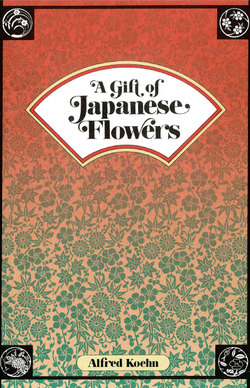Читать книгу Gift of Japanese Flowers - Alfred Koehn - Страница 6
На сайте Литреса книга снята с продажи.
ОглавлениеPREFACE
Enjoyed by young and old, rich and poor, hanami, or flower-viewing, is an integral part of the Japanese people's appreciation of beauty in nature, and plays an important role in their social life as well.
The love of all flowers, particularly the cherry blossom, has for centuries dwelt in the hearts of the Japanese. People find pleasure in donning fine clothes and, in the carefree mood of spring, in going on flower-viewing excursions to noted cherry groves and temple grounds, where a veil of pink blossoms covers lightly and lovingly the face of their island home. These excursions are not limited to one section of the country or one season of the year. The love of nature is a national characteristic and flower-viewing, more than a pleasant pastime, is a national tradition. And though cherry-blossom time is perhaps dearest to the Japanese, they also find symbolic beauty in pine trees that like devout old pilgrims tarry to rest on the rocky seashore, and in deep ravines where autumn winds swirl the red and golden maple branches and leave them quivering from their flight.
Because one cannot always wander over the countryside, drinking in the visions and vistas of the ever-changing landscapes, the custom of having an alcove in one's home in which may hang a seasonal picture, along with a vase filled with cut flowers or branches of trees, has long been popular in Japan. By their exquisite artistry, the Japanese capture with a few blossoms the essence of the robe nature is wearing in the season at hand, and bring within their walls all the charm and color of out-of-door scenes. And so, though the hills, vales, lakes, and glades are settings of utmost grandeur, one's everyday life is also enhanced by living with the spirit of the season as a constant and tangible companion.
—ALFRED KOEHN
